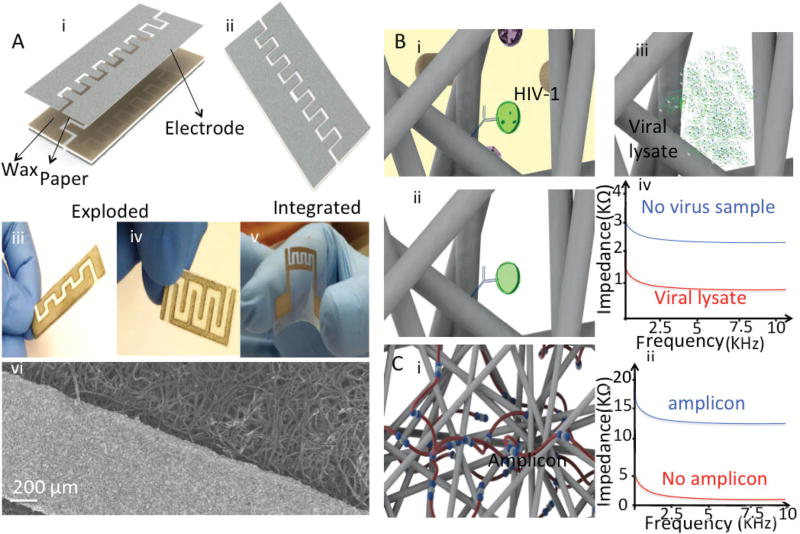Fig. 1.
(A) Cellulose and plastic paper chips with graphene-modified silver electrodes in the (i) exploded and (ii) integrated modes. (iii) A Maze 4 paper chip, (iv) waxed-modified Maze 4 paper chip, (v) plastic paper chip with printed flexible electrodes, (vi) Scanning Electron Microscopy (SEM) of graphene-modified silver electrodes printed on a cellulose substrate. The scale bar is 200 µm. (B) Detection mechanism without nucleic acid amplification. (i) Intact viruses are captured on the paper chip using anti-gp120 antibody. (ii) The paper is washed with a low electrically conductive solution to remove the electrically conductive background. (iii) Captured viruses are then lysed. (iv) HIV-1 nano-lysate is detected through on-chip impedance measurement. (C) Virus detection mechanism with the LAMP technique and electrical sensing. (i) Target HIV nucleic acids are amplified using the RT-LAMP method. (ii) The LAMP amplicons are then detected through on-chip impedance magnitude measurement.

